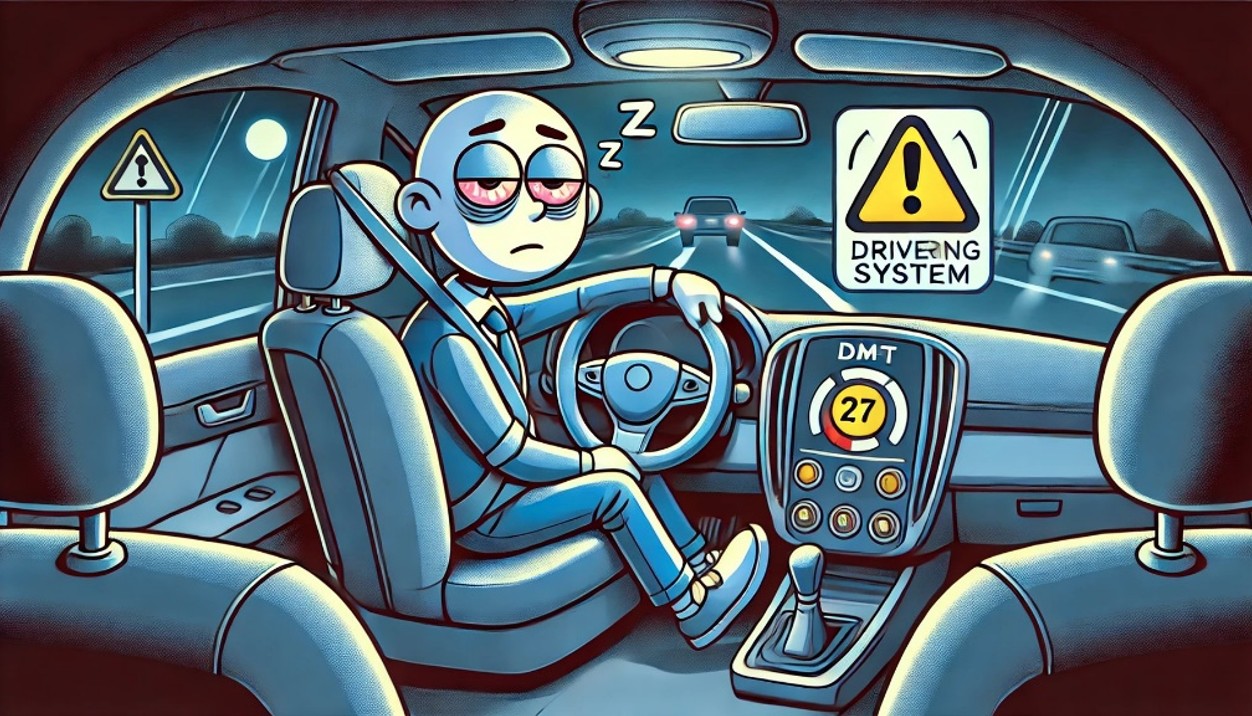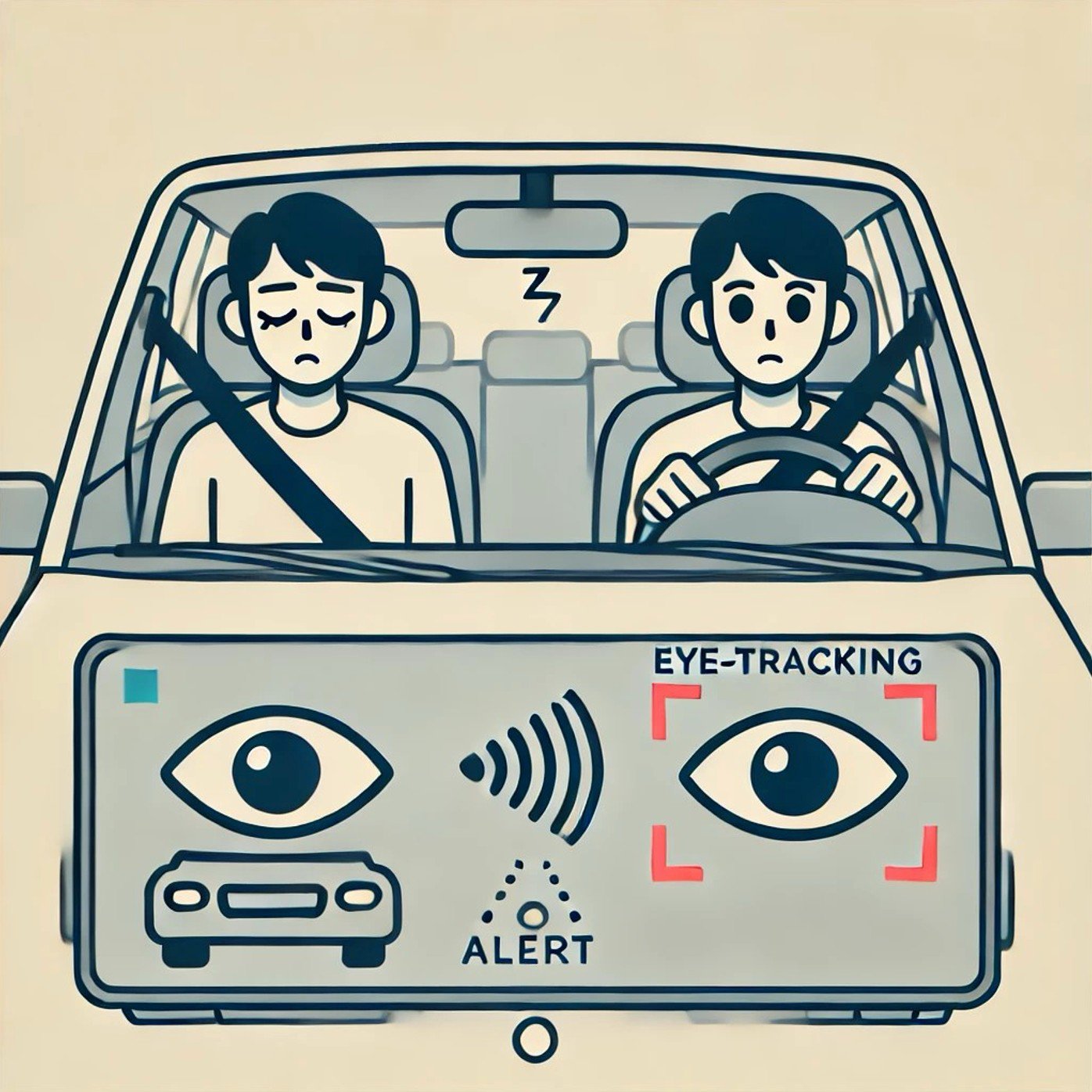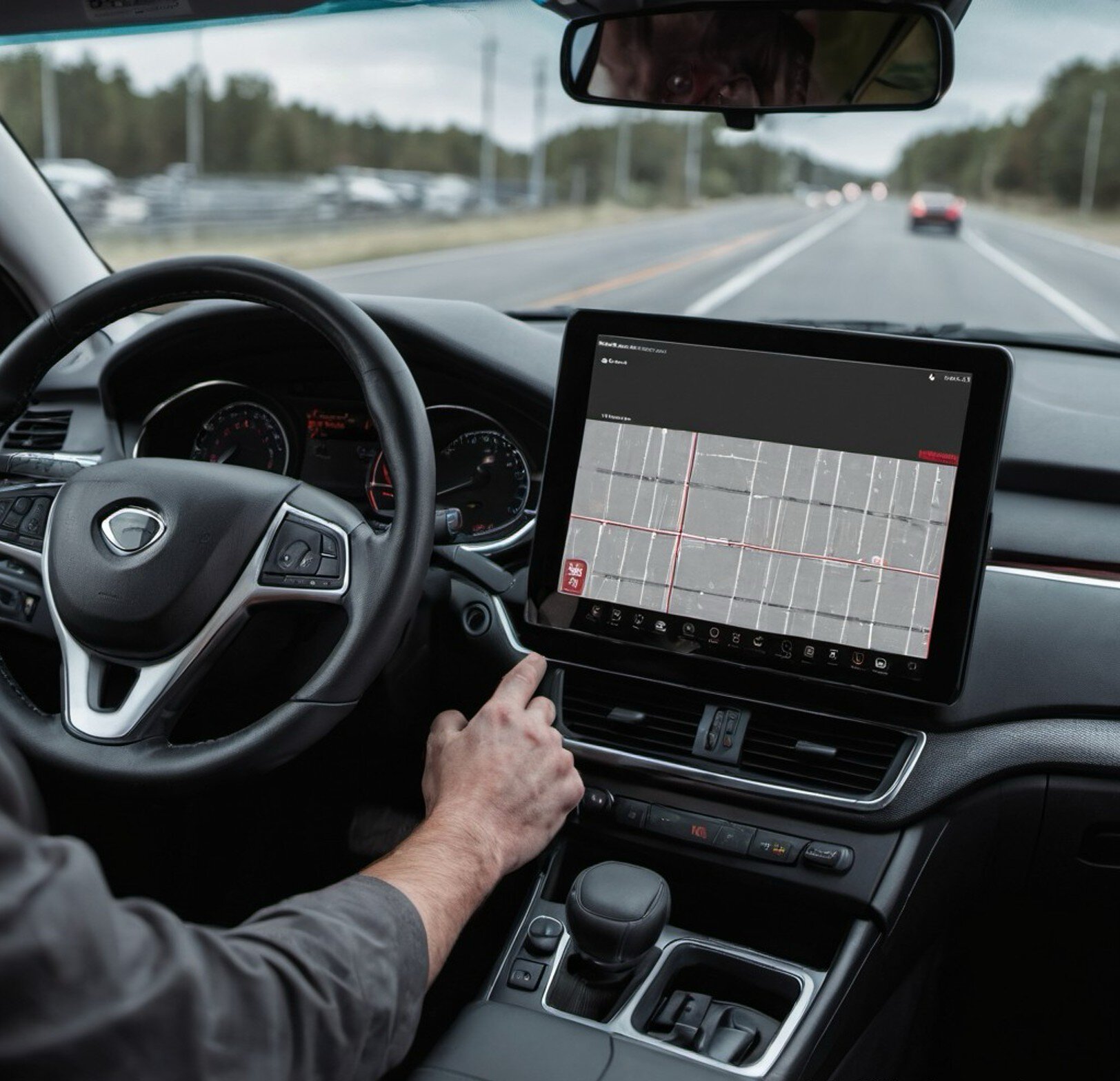08.10.2024
Understanding fatigue in driving and how eye tracking can help
 by Mirta Mikac, Product Manager
by Mirta Mikac, Product Manager
Driving is a daily routine for millions worldwide, but it also comes with inherent risks, especially when fatigue sets in. Driving fatigue is a leading cause of road accidents1, particularly during long drives or nighttime travel, and is often underestimated by drivers who believe they can power through their tiredness. Factors like monotonous roads, lack of breaks, and the body’s natural circadian rhythms, which promote sleep late at night or early in the morning, only heighten the risk.
Eye tracking technology in cars is a rapidly emerging innovation designed to enhance driver safety, with a focus on identifying and managing driver fatigue. By monitoring eye movements, gaze patterns, and blink rates, eye tracking systems can assess alertness and identify early signs of drowsiness or inattention. In this blog post, we’ll explore how this cutting-edge technology is transforming road safety and why it’s becoming a crucial feature in modern cars.

What is driving fatigue?
Driving fatigue, also known as driver drowsiness, is a state of mental and physical exhaustion that affects a driver’s alertness, reaction time, and overall ability to operate a vehicle safely. It is often caused by a lack of sleep, long driving hours, monotonous road conditions, or even medical conditions. Fatigue can significantly increase the risk of accidents, making it a major concern for road safety experts.
When a driver is fatigued, they may exhibit several warning signs, such as2,3,4:
- Slow reaction times: harder to respond quickly to sudden changes in traffic, such as car stopping abruptly or a pedestrian crossing the road
- Impaired judgement: struggling to make sound decisions like judging the speed of oncoming vehicles or determining when it’s safe to merge or change lanes
- Decreased attention: drivers lose focus and become less aware of their surroundings, which can lead to drifting out of lanes, missing traffic signals, or failing to notice road hazards
- Microsleeps: brief, unintentional episodes of sleep lasting only a few seconds – often without being aware of it
Eye tracking in modern vehicles
Eye tracking technology is proving to be one of the most effective tools in preventing fatigue-related accidents. This technology works by continuously monitoring and analyzing driver’s eye movements and behaviors, which are key indicators of their alertness and fatigue levels. Here’s how eye tracking operates in vehicles5,6:
- Cameras and infrared sensors: Eye tracking systems use cameras paired with infrared sensors to monitor the driver’s eyes and facial features. These sensors detect the position and movement of the eyes, pupil dilation, blink rates, and head position to assess the driver’s condition.
- Data processing algorithms: The data collected by the cameras and sensors is processed by specialized algorithms. These algorithms analyze patterns like how frequently and for how long the driver blinks, their gaze direction, and signs of microsleeps. If these patterns suggest fatigue, the system can issue an alert to the driver.
- Detecting drowsiness and inattention:– Blink rate and duration: Eye tracking systems monitor blink patterns in real-time since an increase in blink frequency or longer blink durations often indicate drowsiness
– Eye closure speed: Slow eye closures, or “slow blinks”, are a strong indicator of drowsiness, signalling that the driver is struggling to stay alert.
– Gaze direction and behavior: If the driver’s gaze consistently drifts off the road, it may indicate distraction or inattention. Fatigued drivers also tend to have fewer saccadic movements (quick, synchronized eye shifts) and may fixate more on one point.
– Head position: A head that is tilting forward or suddenly dropping can be another sign of fatigue.
– Pupil dilation: Changes in pupil size can reveal a driver’s reduced focus or cognitive function, often indicating drowsiness.

Many modern vehicles now come equipped with driver monitoring systems (DMS) that utilize these eye tracking methods. Using artificial intelligence (AI) and machine learning algorithms, these systems detect signs of fatigue and inattention7. When fatigue is detected, the system can trigger alerts such as audible alarms, seat vibrations, or visual notifications on the dashboard. In more advanced vehicles, the system may also engage with adaptive cruise control or lane-keeping assistance to help safely guide the vehicle if the driver becomes unresponsive8,9.

Takeaway message
Driving fatigue is a serious factor that compromises road safety across the globe. Fortunately, eye tracking offers a cutting-edge solution to tackle the dangers of drowsy driving. By continuously monitoring eye movements and delivering real-time alerts, these systems help drivers stay alert and reduce the risk of accidents. For those seeking to enhance their driving experience and safety, opting for a vehicle equipped with an eye tracking system is a smart and proactive choice.
1
World Health Organization. (2019). Global status report on road safety 2018. World Health Organization.
2
Yan, X., & Abas, A. (2024). Advancements and Perspectives in Fatigue Driving Detection: A Comprehensive Review. IECE Transactions on Intelligent Unmanned Systems, 1(1), 4-12. https://doi.org/10.62762/TIUS.2024.767724
3
Zhao, L., Wang, Z., Wang, X., & Liu, Q. (2018). Driver drowsiness detection using facial dynamic fusion information and deep belief network. IET Intelligent Transport Systems, 12(2), 127-133.
4
Savas, B.K., & Becerikli, Y. (2020). Real-time driver fatigue detection system based on multi-task convolutional neural networks. IEEE Access, 8, 12491-12498.
5
Philip, P., Sagaspe, P., Taillard, J., Valtat, C., Moore, N., Akerstedt, T., … & Bioulac, B. (2003). Fatigue, sleep restriction, and driving performance: A real-life study. Accident Analysis & Prevention, 35(4), 713-720.
6
Philip, P., Vervialle, F., Le Breton, P., Taillard, J., & Horne, J.A. (2001). Fatigue, alcohol, and serious road crashes in France: factorial study of cause among drivers. BMJ, 322(7290), 829-830.
7
Lee, M.L., Howard, M.E., Horrey, W.J., et al. (2016). High risk of near-crash driving events following night-shift work. Proc. Natl. Acad. Sci. USA, 113(1), 176-181.
8
Dong, Y., Hu, Z., & Uchimura, K. (2011). Driver inattention monitoring system for intelligent vehicles: a review. IEEE Trans. Intell. Transp. Syst., 12(2), 596-614.
9
Di Stasi, L. Renner, R., Catena, A. (2012). Towards a driver fatigue test based on the saccadic main sequence: a partial validation by subjective report data. Transp. Res. C Emerg. Technol., 21(1), 122-133.
